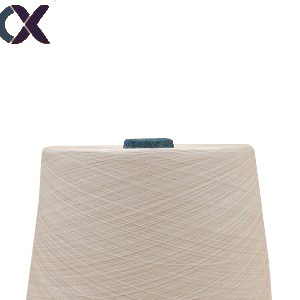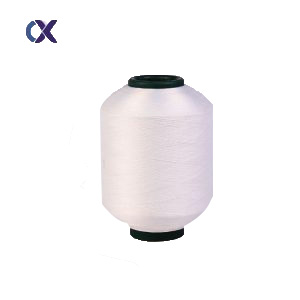- Chinese
- French
- German
- Portuguese
- Spanish
- Russian
- Japanese
- Korean
- Arabic
- Irish
- Greek
- Turkish
- Italian
- Danish
- Romanian
- Indonesian
- Czech
- Afrikaans
- Swedish
- Polish
- Basque
- Catalan
- Esperanto
- Hindi
- Lao
- Albanian
- Amharic
- Armenian
- Azerbaijani
- Belarusian
- Bengali
- Bosnian
- Bulgarian
- Cebuano
- Chichewa
- Corsican
- Croatian
- Dutch
- Estonian
- Filipino
- Finnish
- Frisian
- Galician
- Georgian
- Gujarati
- Haitian
- Hausa
- Hawaiian
- Hebrew
- Hmong
- Hungarian
- Icelandic
- Igbo
- Javanese
- Kannada
- Kazakh
- Khmer
- Kurdish
- Kyrgyz
- Latin
- Latvian
- Lithuanian
- Luxembou..
- Macedonian
- Malagasy
- Malay
- Malayalam
- Maltese
- Maori
- Marathi
- Mongolian
- Burmese
- Nepali
- Norwegian
- Pashto
- Persian
- Punjabi
- Serbian
- Sesotho
- Sinhala
- Slovak
- Slovenian
- Somali
- Samoan
- Scots Gaelic
- Shona
- Sindhi
- Sundanese
- Swahili
- Tajik
- Tamil
- Telugu
- Thai
- Ukrainian
- Urdu
- Uzbek
- Vietnamese
- Welsh
- Xhosa
- Yiddish
- Yoruba
- Zulu
- Kinyarwanda
- Tatar
- Oriya
- Turkmen
- Uyghur

Blogs
In the world of handicrafts, crochet yarn serves as a medium for creators’ inspiration and emotions. With its soft texture, rich colors, and diverse materials, it allows people to transform their imagination into warm and unique pieces through the art of knitting. Let’s take an in – depth look at every aspect of crochet yarn.
I. Definition and Essence of Crochet Yarn
Crochet yarn is specifically designed for hand – knitting techniques such as crochet and knitting. Compared with ordinary textile yarns, crochet yarn places more emphasis on texture, color expressiveness, and the feel during the knitting process. It usually has a thicker diameter, making it easier for knitters to handle and enabling the creation of thick, three – dimensional knitting effects in a relatively short time. The characteristics of crochet yarn endow knitted works not only with practical value but also with a strong artistic flavor and the creator’s personal touch.
II. Classification and Characteristics of Crochet Yarn
(I) Natural – Material Crochet Yarn
- Wool Yarn: Wool yarn is a highly favored type in the realm of crochet yarn. Sourced from sheep’s wool, it boasts excellent heat – retention, making it an ideal choice for winter clothing and home textiles. The scaly structure on the surface of wool fibers gives it natural elasticity and a fluffy feel, resulting in knitted items that are soft and three – dimensional. Moreover, wool yarn has good moisture – absorption, capable of absorbing and releasing moisture from the human body, ensuring a dry and comfortable wearing experience. However, wool yarn requires special care when washing, as high temperatures and vigorous rubbing may cause it to shrink and deform.
- Cotton Yarn: Cotton yarn is made from natural cotton and is known for its softness and breathability. It has strong moisture – absorption, making it suitable for making close – fitting clothes, baby products, and summer fabrics. Cotton yarn comes in a wide range of colors and has excellent dyeing properties, allowing for the creation of various vivid or soft hues. In addition, cotton yarn is relatively affordable and less likely to generate static electricity during the knitting process, providing a smooth knitting experience, which makes it a popular choice among novice knitters.
- Linen Yarn: Linen yarn is made from flax plant fibers. It has a rough texture, natural patterns, and a cool touch. Its moisture – absorption and breathability are extremely strong, making it particularly suitable for summer clothing and home decorations such as tablecloths and curtains. Linen – yarn – knitted items will gradually become softer with use and washing, developing a unique vintage texture. However, it is also prone to wrinkling.
- Silk Yarn: Silk yarn is a high – end option among natural materials. Made from silkworm cocoons, its fibers are long, smooth, and have an elegant luster and soft hand – feel. Silk yarn offers both good heat – retention and breathability and is often used to make delicate accessories such as shawls and scarves, adding a noble touch to the works. However, silk yarn is relatively expensive and requires more careful handling during knitting and maintenance.
(II) Chemical Fiber Crochet Yarn
- Acrylic Yarn: Acrylic yarn, often referred to as “synthetic wool” due to its similar appearance and feel to wool, has good heat – retention, vivid dyeing properties, and excellent light – resistance, remaining unfaded even after long – term exposure to sunlight. It is affordable, lightweight, resistant to shrinkage, and easy to care for, making it suitable for creating various colorful knitted items such as woolen hats and blankets. However, its moisture – absorption is relatively poor, which may cause a stuffy feeling when worn.
- Polyester Fiber Yarn: Polyester fiber yarn is characterized by high strength, wear – resistance, and resistance to deformation, with good wrinkle – resistance and shape – retention. It is often blended with other materials to enhance the yarn’s performance. Knitted products made from polyester fiber yarn are easy to wash and dry quickly, making them suitable for home decorations and some functional fabrics such as sofa cushions and storage baskets.
- Nylon Yarn: Nylon yarn is renowned for its excellent abrasion – resistance and also has good elasticity and moisture – absorption. In knitting, nylon yarn is often used in areas that need to withstand significant friction and tension, such as the edges of clothes and the heels and toes of socks. Additionally, nylon yarn has good corrosion – resistance, making it suitable for outdoor knitted works.
(III) Blended Yarn
Blended yarn is spun by mixing two or more different types of fibers. By combining the advantages of different fibers, blended yarn can possess multiple characteristics. For example, a blend of wool and acrylic yarn retains the warmth and softness of wool while incorporating the bright colors and easy – care properties of acrylic. A blend of cotton and linen combines the softness of cotton with the coolness and breathability of linen, meeting a wider range of knitting needs.
III. Application Scenarios of Crochet Yarn
(I) Fashion Industry
Crochet yarn plays a significant role in clothing production. From warm and thick woolen coats, soft and comfortable cotton sweaters to delicate and elegant silk shawls, different types of crochet yarn can be used to create clothing items with diverse styles. Knitters can choose the appropriate yarn and knitting patterns according to the season, occasion, and personal preferences, making unique clothing that showcases individuality and fashion taste.
(II) Home Decoration Field
In home decoration, crochet yarn also shines brightly. Colorful acrylic blankets, rustic cotton – linen curtains, and cute crocheted cushions – these home accessories made from crochet yarn not only add warmth and comfort to the home environment but also enhance the artistic atmosphere of the space through unique designs and color combinations.
(III) Creative Gift Field
Works made from crochet yarn are thoughtful gift choices. Whether it’s a soft little sweater knitted for a newborn, a personalized scarf for a friend, or a creative crocheted doll, each hand – knitted gift contains the creator’s care and blessings, carrying deep emotions.
IV. Selection and Usage Tips for Crochet Yarn
When selecting crochet yarn, it is necessary to comprehensively consider the purpose of the knitting project, personal budget, and knitting skill level. For example, when making baby products, soft, breathable, and non – irritating cotton yarn should be preferred. If knitting items for outdoor use, consider yarns with good abrasion – resistance such as nylon or polyester fiber yarn. During use, reasonably matching yarns of different materials and colors can create rich visual effects and unique textures. At the same time, choosing the appropriate knitting needle size and knitting method according to the characteristics of the yarn can better showcase the texture of the yarn and the effect of the work.
Previous News
Staple Fibre: The Practical Cornerstone of the ...Next News
Functional Yarn: The Revolutionary Power of Tex...Share:
Feature Product
-
 Wool yarn
Wool yarn1.Product Introduction Wool yarn, often also kn...
-
 Viscose yarn
Viscose yarn1.Product Introduction Viscose yarn is a popula...
-
 Spandex Yarn
Spandex Yarn1.Product Introduction Elastane, another name f...
